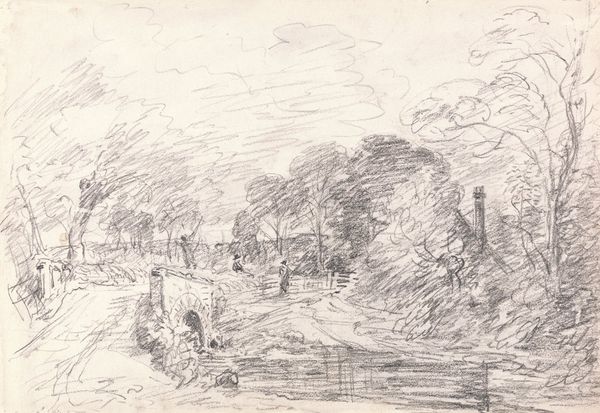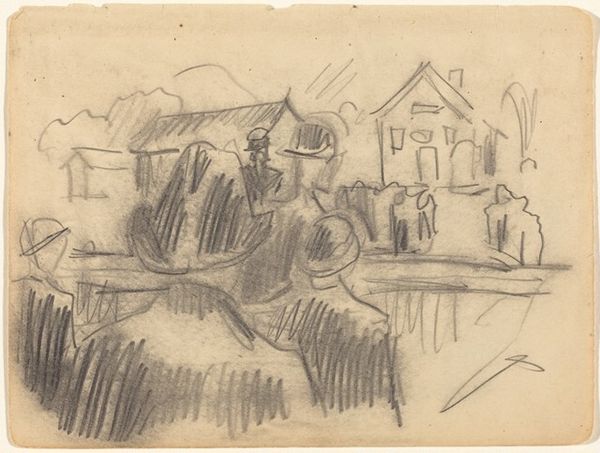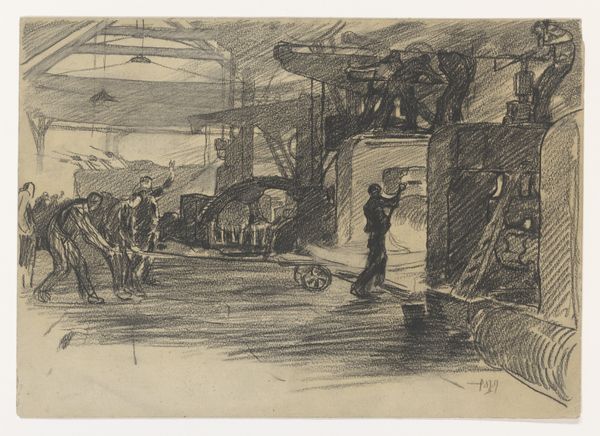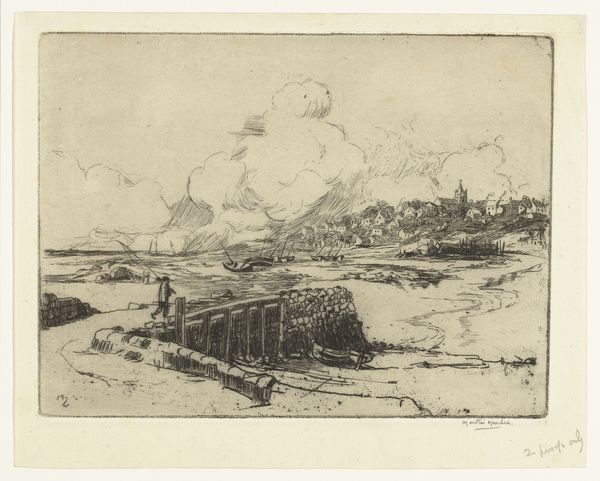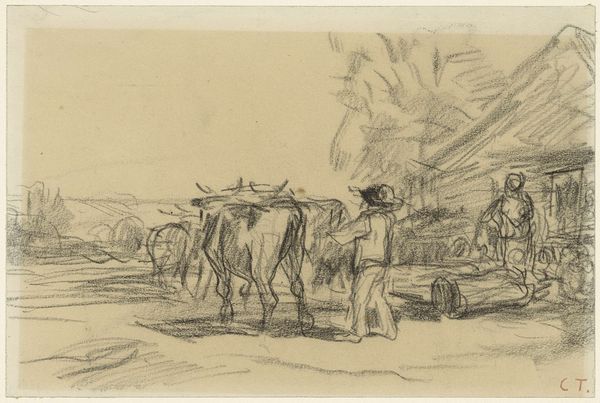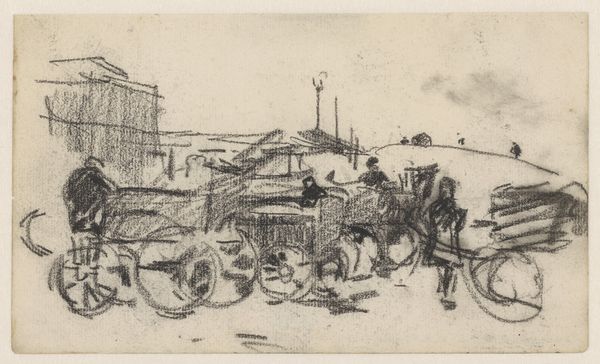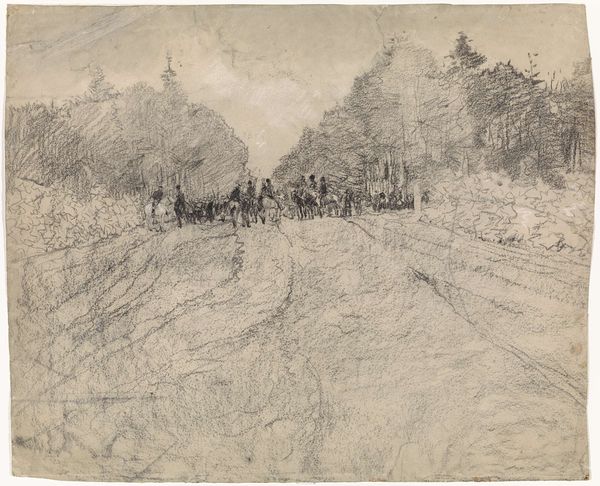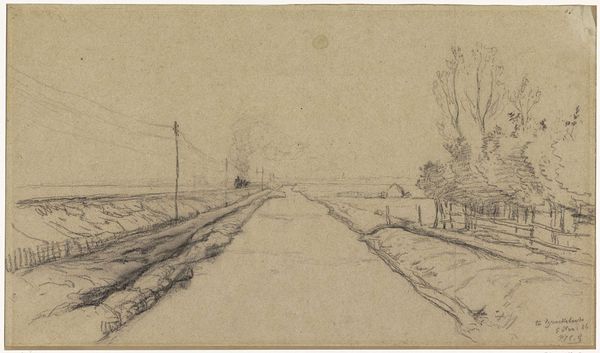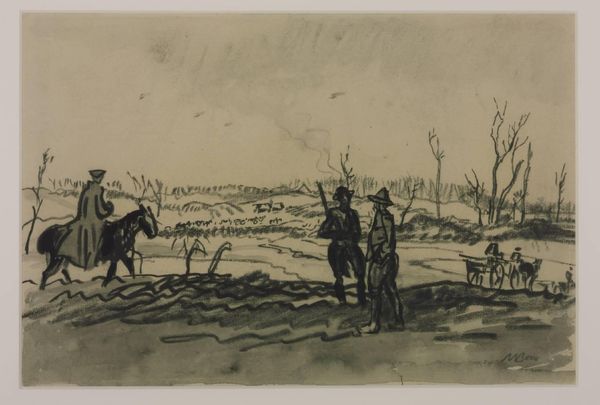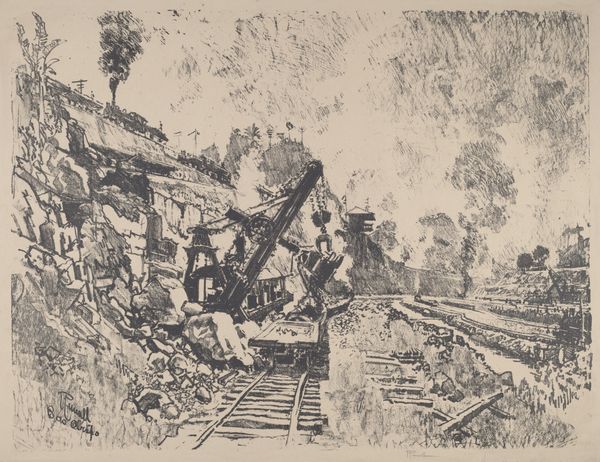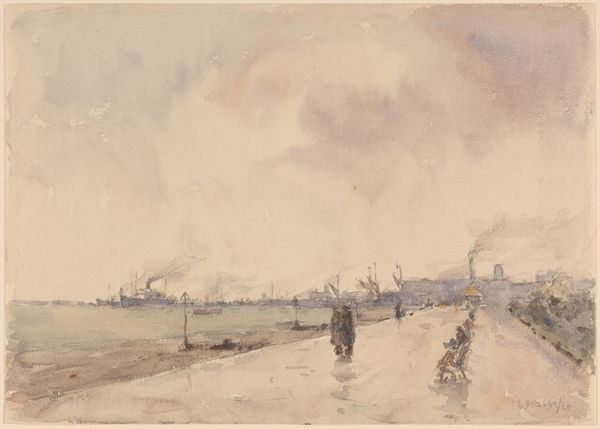
drawing, plein-air, ink
#
drawing
#
plein-air
#
landscape
#
ink
#
realism
Dimensions: height 355 mm, width 492 mm
Copyright: Rijks Museum: Open Domain
Editor: So, this is Jan van Essen's "Unloading Carts by a Canal," likely made sometime between 1864 and 1936. It's an ink drawing, a quick plein-air sketch capturing a scene by a waterway. I find it very… understated. Almost like a simple record of daily life. What catches your eye? Curator: Immediately, the material choices tell a story. Ink, a readily available and affordable medium, emphasizes the accessibility of artmaking during that period. Notice the "plein-air" aspect; this wasn't some studio-bound, idealized depiction. Instead, it points to a focus on observing and documenting the labour and industry happening in real-time. Consider, too, the social context - why document these laborers? What statement does the artist make about their social value? Editor: So, it's not just a simple landscape? Curator: Far from it! The roughness of the ink, the hasty lines…it isn't about glorifying the scene but acknowledging the hard labor inherent in moving goods by canal. It subtly comments on the means of production and distribution. Are those workers, and even the animals, romanticized? No. Are they essential? Van Essen, I think, forces us to recognize their roles. Where do you see the class at work in this artwork? Editor: It's evident, thinking about the materials... not oil paint or marble. The immediacy of ink gives it an urgency too. It feels much more present than it initially seemed. Curator: Precisely. And that "present-ness" highlights a very particular moment of labor and exchange. To see that, and discuss its reflection in this medium, transforms the piece. Editor: Thank you. That adds an entirely new layer of depth to my interpretation.
Comments
No comments
Be the first to comment and join the conversation on the ultimate creative platform.
